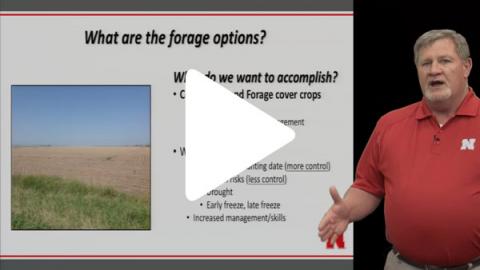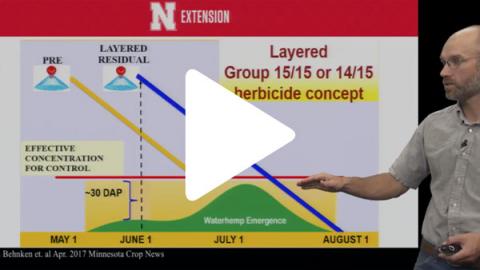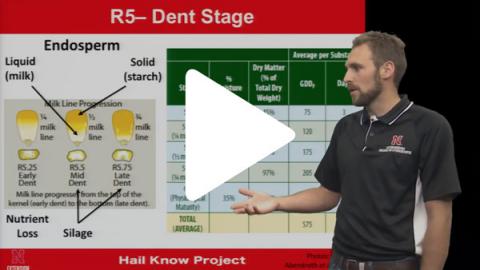Cover Crop Considerations Following Late-Season Hail
August 29, 2019
Late-season hail has impacted fields across Nebraska. Growers may want to consider the value of cover crops for weed management, excess nitrogen uptake, and forage options.
Incorporating Drought or Hail Stricken Dry Edible Beans in Livestock Feed
August 28, 2019
In some areas of western Nebraska hail and drought took a toll on dry edible beans this year, reducing the feasability of harvesting them for rigorous human consumption standards. Consider these other options for their use.
Making Silage from Late-season Hail-damaged Corn
August 29, 2018
For corn growers with cattle or whose neighbors have cattle, making silage from late-season hail-damaged corn can be a good option. Here's what to consider.
Video: Forage-Livestock Options and Cover Crops Following Hail Damage in Corn or Soybean
This presentation covers cover crop forage options following hail damage in corn and soybean fields, recommended planting date, use of warm- versus cool-season grasses, recommended grazing strategies, and available resources. Daren Redfearn, Nebraska Extension Forage Crop Residue Specialist.
Video: Weed Management Considerations Following Hail
Production loss estimates in corn from hail damage is a critical first step for determining the need to replant or to make adjustments on future inputs. Regardless of crop development stage, it is critical to wait 7-10 days to allow the crop to respond for proper evaluation. Production loss estimates by the Federal Crop Insurance Corporation in corn may include remaining plant stand, defoliation and direct losses from ear damage depending on the stage of development. Additional losses and quality issues can occur with fungal infections so continued scouting of hail damage fields is important. Be sure to contact your crop adjuster before making any management decisions on a hail damaged crop. Justin McMechan, University of Nebraska Crop Protection and Cropping System Specialist.
Video: Hail Damage Evaluation and Management in Soybean
Estimating yield losses in soybeans from hail damage is a critical first step for determining the need to replant or to make adjustments on future inputs. As with any hail damage in row crops, it’s critical to wait 7-10 days to allow the crop to respond for proper evaluation. Production loss estimates by the Federal Crop Insurance Corporation in soybean can be a combination of remaining plant stand, nodes cut or broken, and defoliation. Beginning maturity and full maturity stage soybeans are evaluated based on the seed count method. Be sure to contact your crop adjuster before making any management decision on a hail-damaged crop. Justin McMechan, University of Nebraska Crop Protection and Cropping System Specialist
Video: Hail Damage Evaluation and Management in Corn
Production loss estimates in corn from hail damage is a critical first step for determining the need to replant or to make adjustments on future inputs. Regardless of crop development stage, it is critical to wait 7-10 days to allow the crop to respond for proper evaluation. Production loss estimates by the Federal Crop Insurance Corporation in corn may include remaining plant stand, defoliation and direct losses from ear damage depending on the stage of development. Additional losses and quality issues can occur with fungal infections so continued scouting of hail damage fields is important. Be sure to contact your crop adjuster before making any management decisions on a hail damaged crop. Justin McMechan, University of Nebraska Crop Protection and Cropping System Specialist.
New Late-Season Hail Videos Added to Hail Know
August 24, 2018
This week four new videos were added to the Hail Know section in CropWatch to address crop assessment and management options after late-season hail, including weed management, cover crops, and forage options.






